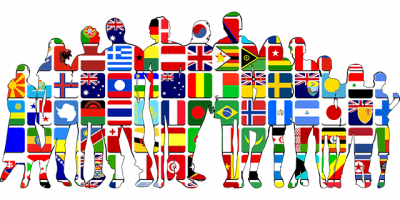
(Note: Inclusive, gender neutral language is intentionally used in the article.)
Imagine a person on the elevator at their workplace. The elevator stops, and the person waits for another person to board. But instead, when the door opens, the other person recoils, disengages eye contact and does not board.
The door closes and the person on the elevator continues their ride wondering what could have possibly made the other person take those few steps back. Was it something about the person, their appearance, or perhaps something triggered the other person? I imagine the person left in the elevator is perplexed about the situation and puzzled over what just transpired.
I (Mena Nakhla) write this as a person of color, curious and a bit unsettled by this real-life experience that happened to me.
I often wonder if being a male, a person of color, or both contributed to how that person viewed me, literally recoiling upon the sight of me. People of color are often familiar with situations like mine. What can be frustrating in these situations is knowing I had been slighted without having words to explain how I know.
In the 1970s, Dr. Chester M. Pierce coined the term microaggression to give voice to what I and other people of color experience every day. Almost 30 years later, Dr. Derald Wing Sue amplified and expanded the definition of racial microaggressions as the "brief and commonplace daily verbal, behavioral, or environmental indignities, whether intentional or unintentional, that communicate hostile, derogatory, or negative racial slights and insults toward people of color ."
Microaggressions are fueled by biases and false beliefs about something, someone, or some group. Previous experiences, the media, and/or conditioning influence our views, which may manifest in biases, stereotypes, and discriminatory practices. Microaggressions exact a cumulative toll that can impact a person’s sense of self and ability to actualize their potential.
These messages, whether intentional or unintentional, negatively impact the standard of living and quality of life of the recipient, subtly teaches children racism, and can and have long-term financial and health implications for everyone.
 In the April edition of “Cultivating Seeds of Equity and Justice,” we provided resources that allowed you to evaluate personal biases that may unintentionally cause harm to those we serve. These resources included:
In the April edition of “Cultivating Seeds of Equity and Justice,” we provided resources that allowed you to evaluate personal biases that may unintentionally cause harm to those we serve. These resources included:
- Project Implicit through Harvard University, which helps identify unconscious attitudes and beliefs through a variety of Implicit Association Tests.
- The Implicit Bias Module Series through the Kirwan Institute for the Study of Race and Ethnicity, which educates about the origins of implicit associations, helps uncover biases, and provides strategies for addressing them.
In this edition, once again we highlight availability of these resources for people to access and review. Evaluation of implicit biases requires ongoing, consistent, rigorous examination. The difference between a client’s current and future engagement in our services is well elucidated in a principle Maya Angelou articulated, “I've learned that people will forget what you said, people will forget what you did, but people will never forget how you made them feel.”
To promote people-focused, culturally relevant experiences for those we serve, Domestic and Sexual Violence Services (DSVS) has developed an equity and social justice workplan as a part of its strategic planning process. This workplan, which will be further discussed in future editions of “Cultivating Seeds of Equity and Justice,” includes review of divisional policies, procedures, and practices that may unintentionally promote bias and harm.
–Mena Nakhla and the DSVS Equity Team
This article posting is part of the Domestic and Sexual Violence Services' Volunteer Voices monthly newsletter for current and potential volunteers. If you're not already a volunteer, learn how to get involved. Find out about upcoming trainings, volunteer trainings, happenings around the DSVS office and information about articles, books, media recommendations and more.
Learn more about the Domestic and Sexual Violence Services (DSVS).

